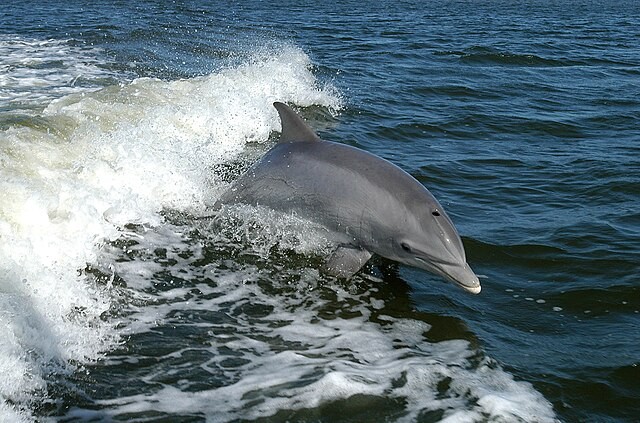
(Photo : Wikimedia Commons/NASA)
Bird flu has spilled over to cetaceans. A dolphin from Florida was diagnosed with "highly pathogenic" avian influenza.
First Dolphin With Bird Flu
Researchers from the University of Florida discovered that a dolphin from the state was the first cetacean ever recorded with the "highly pathogenic" bird flu, also known as Avian influenza virus or HPAIV, in North America.
According to the marine rescue teams, the dolphin was "in distress" when they found it stuck in a Dixie County canal in March 2022. They tried to save the animal, but it died shortly after the rescue team arrived.
They packed the remains and transported them to the University of Florida. The scientists did not suspect bird flu, but postmortem showed several health problems, including inflammation of the brain and leptomeninges disease.
After more investigation, they found symptoms that matched those of other virus-infected Florida species. Brain inflammation was also present in birds that had the flu. The researchers added that the virus had also been responsible for the deaths of harbor seals and gray seals in 2022. A tiny percentage of the deceased also experienced neurological problems.
Since its discovery in North America in 2021, the virus has spread to other mammals, including birds. Scientists were therefore aware of the potential for "spillover" onto other marine animals, including dolphins.
They eventually found the isolated virus in the dolphin's brain tissue after running a number of tests. It's unclear, though, how the dolphin would have gotten the virus. The spread of avian flu "could be catastrophic" for cetaceans, the experts said.
ALSO READ: H5N1 Bird Flu Has Spread to Humans With 'Extraordinarily High' Mortality Rate, WHO Warns
Bird Flu Outbreak Affects Commercial Milk
In related news, cows were also affected by bird flu. The Food and Drug Administration (FDA) said in a statement released last week that they traced fragments of the bird flu virus in about 20 percent of retail milk samples they tested.
The outcome suggests a wider spread of the avian flu outbreak in dairy cows than the 33 herds across eight states that have been officially reported as infected.
Authorities and public health experts assured the consumers that there is insufficient evidence to suggest that the milk poses a risk for consumption or harbors live viruses.
Experts believe that the virus was rendered inactive after pasteurization, the process of briefly heating milk.
Samuel Alcaine, a microbiologist and food scientist at Cornell University, added that there was no way for the remaining genetic bits to spread infection. Also, finding a trace of the virus in milk was reportedly not surprising and it didn't mean the milk was not safe.
Last year, there were rumors about human-to-human transmission after an 11-year-old died due to bird flu and her father got hospitalized for the same diagnosis. The father survived and CDC shut down the rumors that there was mutual transmission between the father and daughter.
The health organization stressed that bird flu rarely affects humans. And when it does, it spreads through close contact with infected birds, not between humans.
RELATED ARTICLE: Burkina Faso Bird Flu Outbreak: 500,000 Chickens Die Due to H1N1 Strain
Check out more news and information on Bird Flu in Science Times.

![Some Brain-Injured Patients Who Died After Life Support Was Withdrawn May Have Survived, Recovered Some Level of Independence 6 Months After Injury [Study]](https://1721181113.rsc.cdn77.org/data/thumbs/full/53613/89/56/50/40/some-brain-injured-patients-who-died-after-life-support-was-withdrawn-may-have-survived-recovered-some-level-of-independence-6-months-after-injury-study.jpg)












